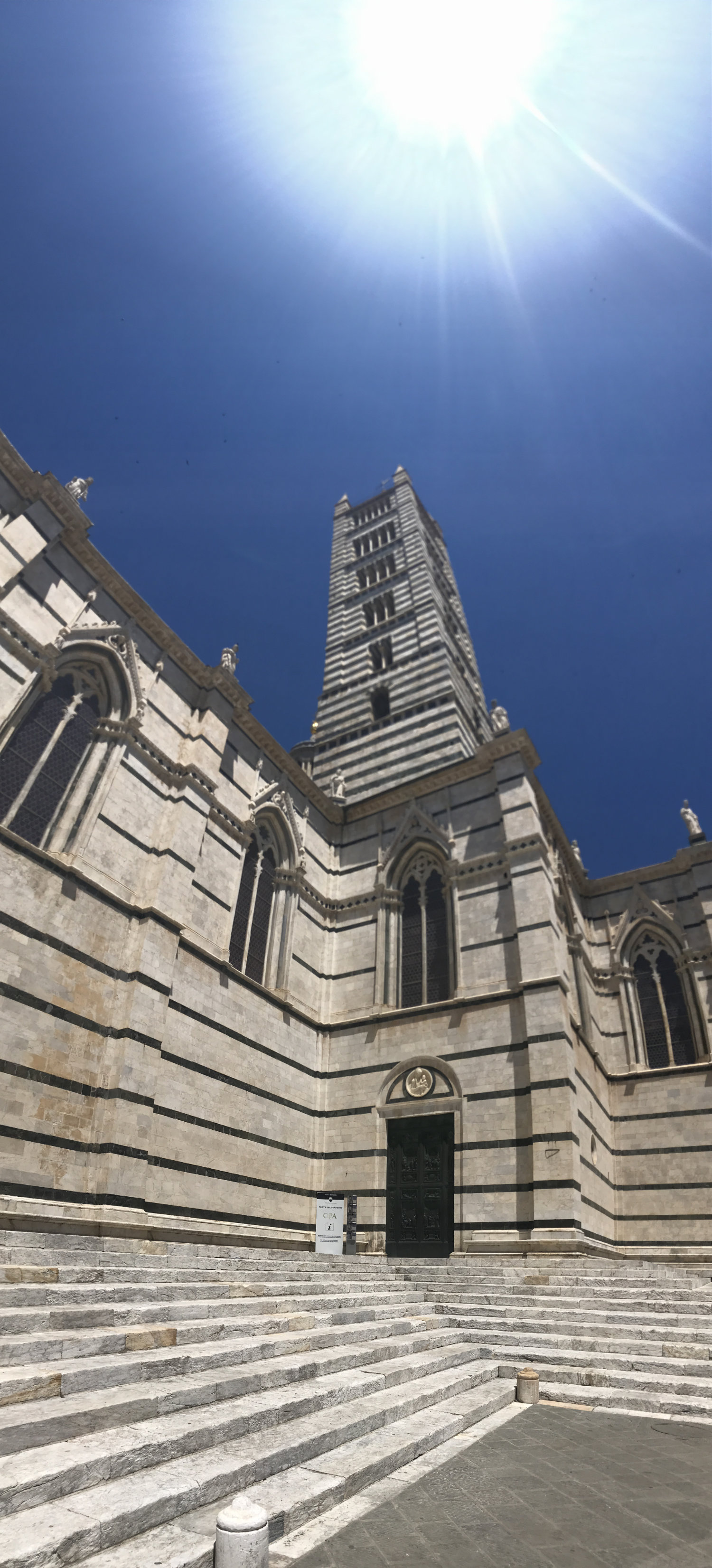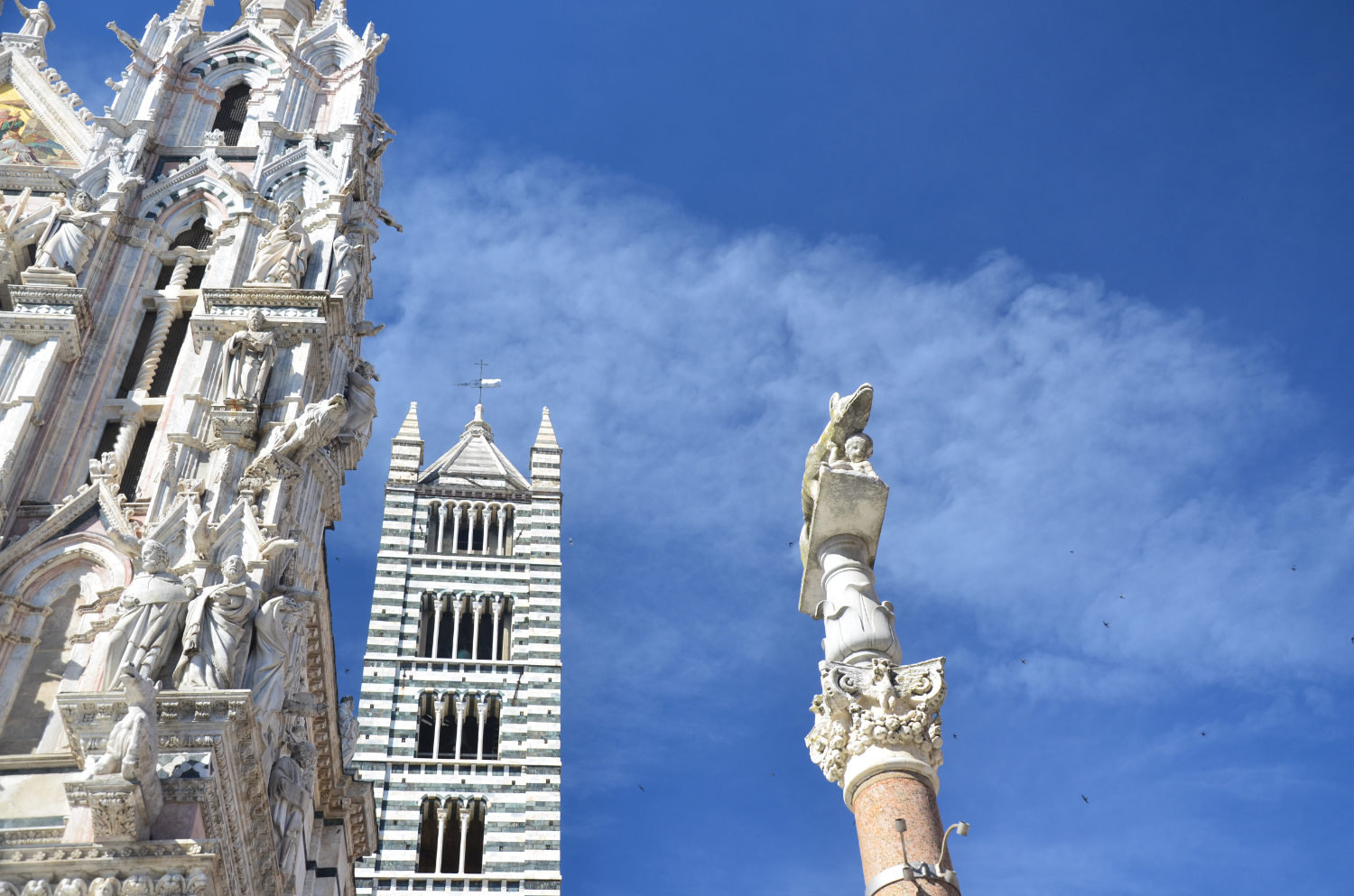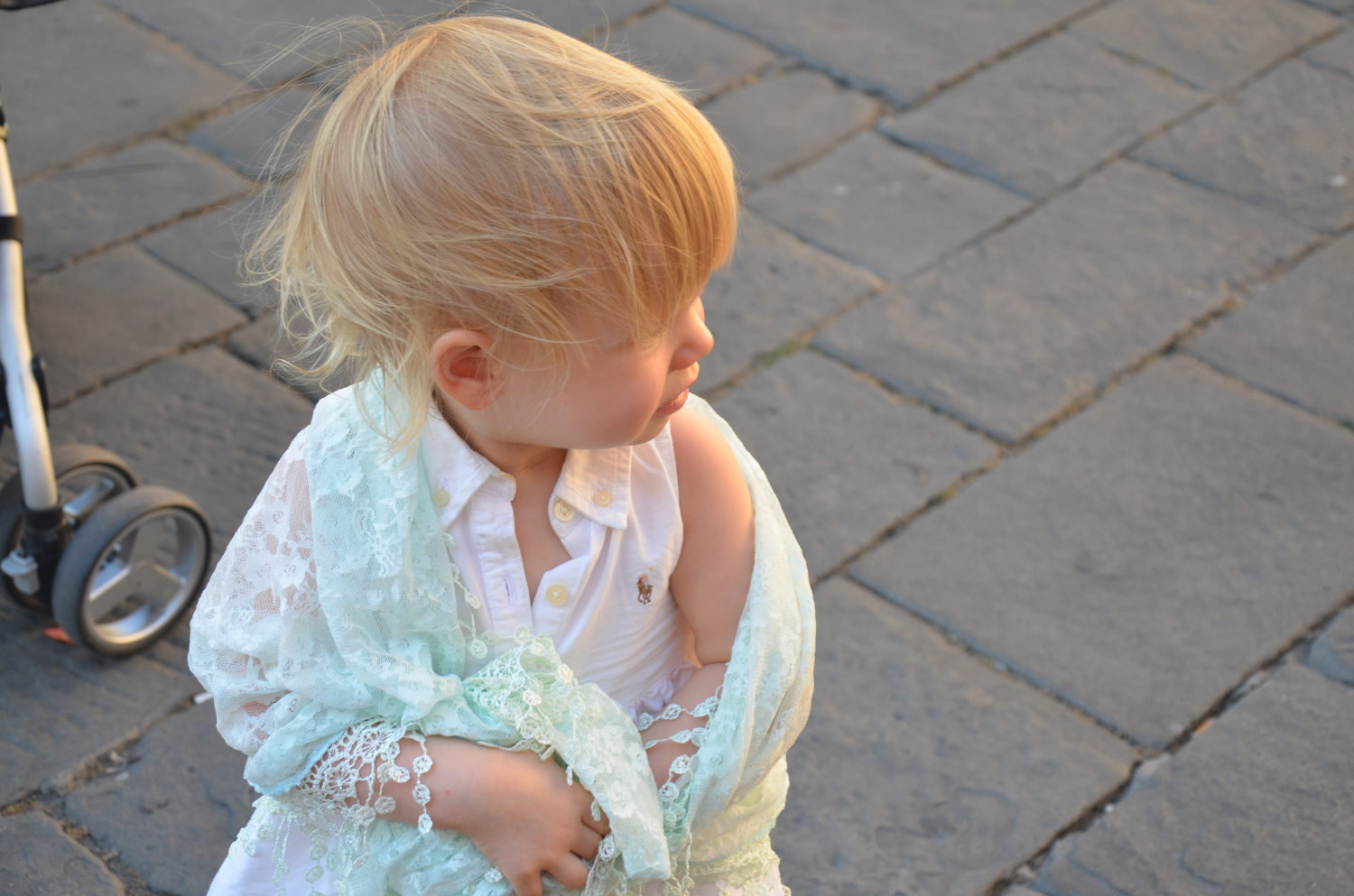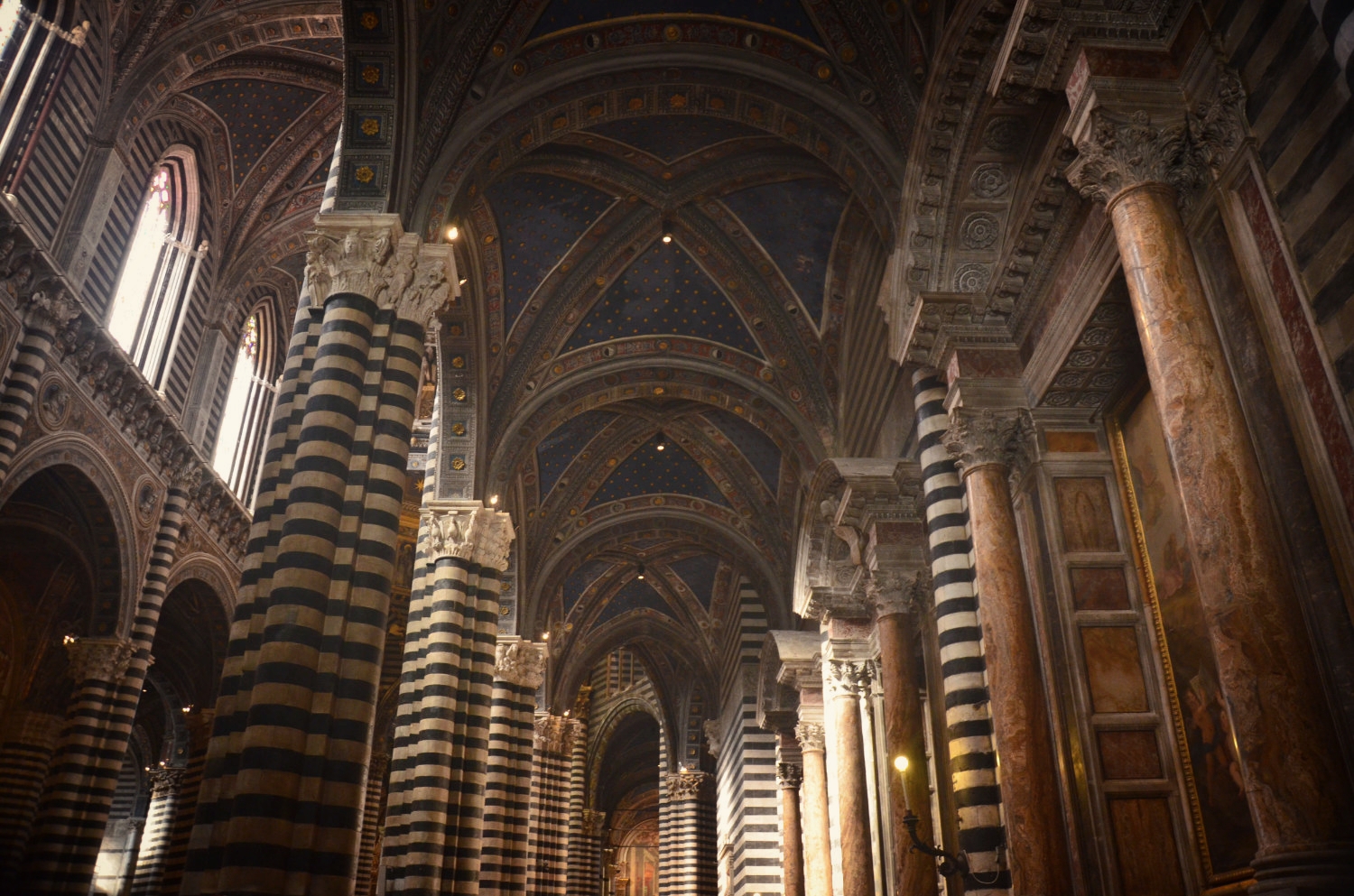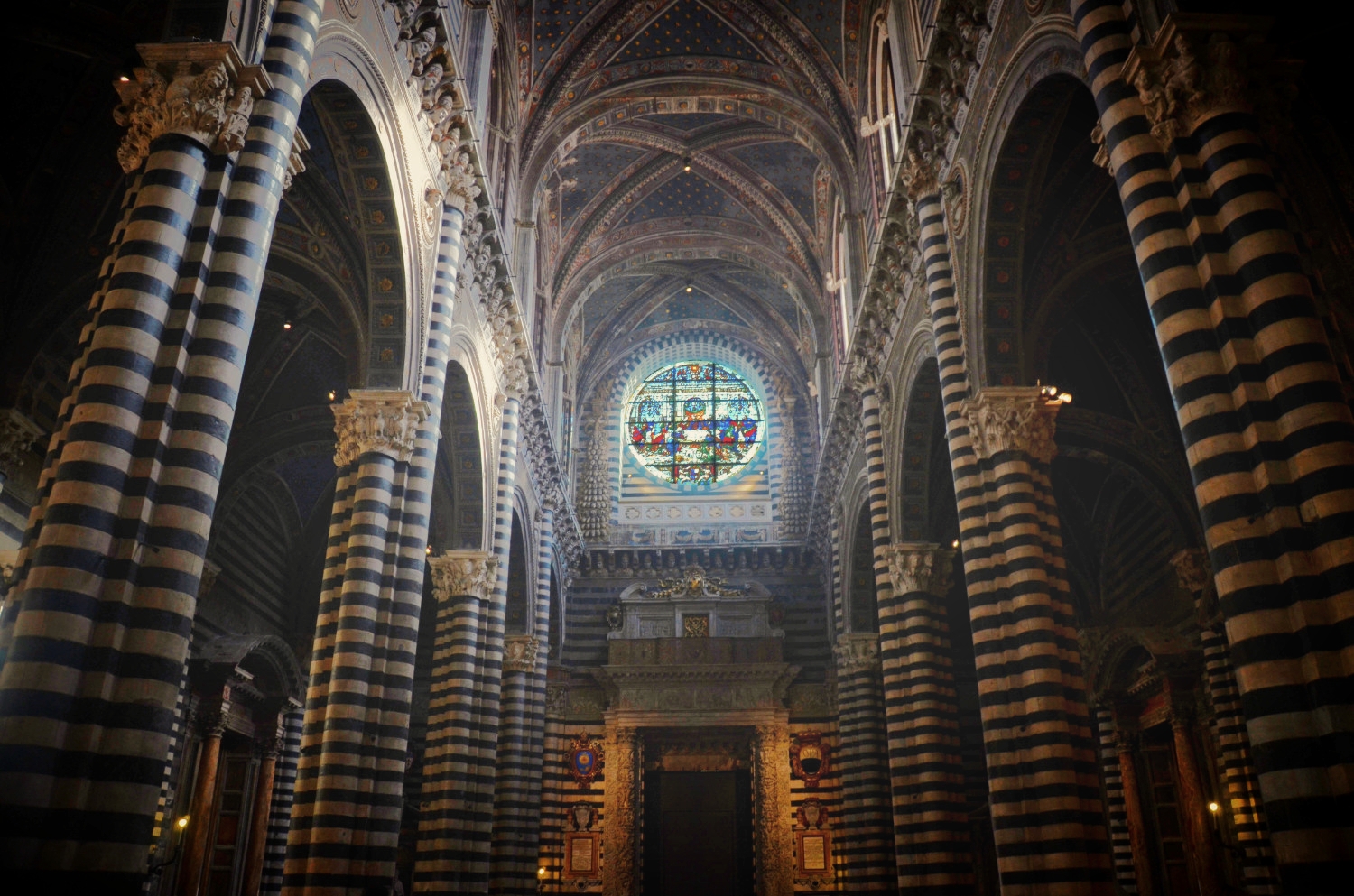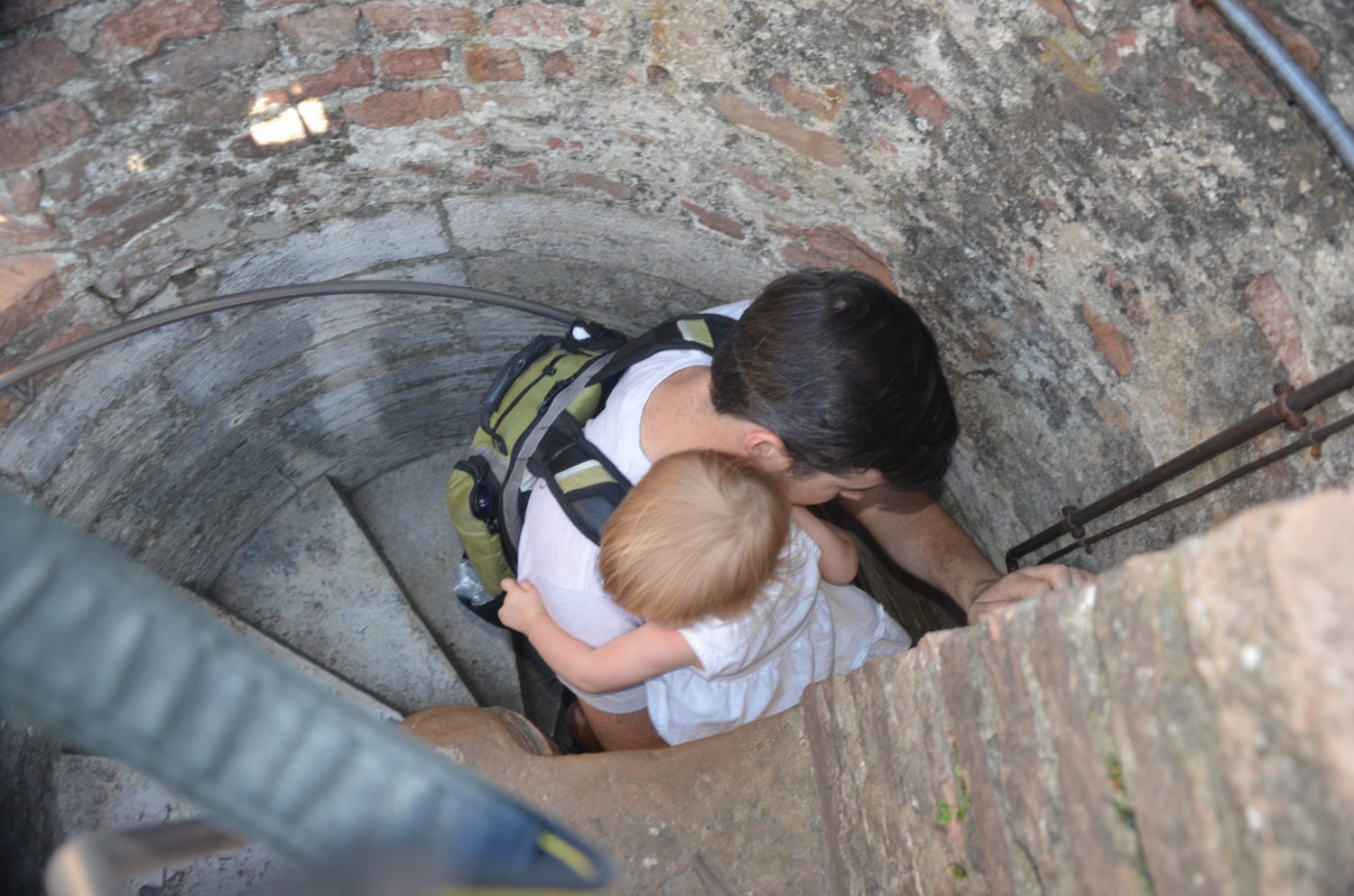Siena's Famous Cathedral and Piazza
We recently took a short weekend trip from our Italian home base in Florence to its bitter medieval rival, the town of Siena. Located about 30 or so kilometers south, it's an easy hour or two long bus trip on the local commuter line through some stunning Tuscan countryside.
The weekend was a whirlwind, but we're used to that at this point. We enjoyed it so much, in fact, that we'd like to take you on a quick visual journey through just one of our many favorite spots in Siena, the Piazza del Duomo.
We'll guide you through some of the most noteworthy aspects of the famous and breathtaking facade, as well as the numerous museums in and around the square. To top it off, we'll end with the city's most stunning view, but don't skip ahead just yet! Just like in person, it's worth the wait.
An Introduction
Siena’s Duomo sits atop the highest point in the city in the square bearing its name, the Piazza del Duomo. The ground was broken at the site for the complex in 1190. The Piazza is spacious and welcoming, with enough room for anyone to frame the cathedral behind them in their obligatory selfies. The building itself, the Duomo di Siena, is a renowned architectural masterpiece, particularly for its ornate blend of Roman and French Gothic design. It stands proudly on its hilltop as a representation of the architectural transformation that swept through Europe during its construction from 1215 to 1348.
Directly across from the cathedral is Santa Maria della Scala, a monstrous red brick building that once housed pilgrims, the poor, and sick children when needed. Even though it may have been built prior to 1090, Santa Maria della Scala was considered one of Europe's largest hospitals as recently as two decades ago. It now houses incomparable works of art and serves as a wonderful dedication to the rich and vibrant history of the city of Siena.
Exploring the Piazza
Once you arrive and pick your jaw up off of the ground, you head over to the eastern corner of the Santa Maria della Scala to choose from various ticket packages for any or all of the duomo's surrounding attractions. We chose the Opa Si Plus pass, which cost 13 euro for each of us.
This combo ticket allowed us entry into the cathedral, which also houses the library of illuminated manuscripts. Included in the plus pass is a visit to the crypt, the baptistry, the Duomo museum, as well as the adjacent and incomplete second facade. Below is a view from the ticket office for reference.
After purchasing your ticket, head over to the magnificent facade of the cathedral. If you're joined by many others, you may have to wait on the white marble steps of the duomo for a while. We used the time to study the buildings' spectacularly detailed Gothic and Roman sculptures.
Adorned in green, white, pink and gold, the duomo is well-recognized for its distinctive striped style. This style is not only on the exterior as the interior carries the unique color theme from floor to ceiling. Even the lofty bell tower alternates black and white marble. This design was the Sienese’s ultimate tribute to the Virgin Mary, showing that no building should stand in competition to hers.
Although the bell tower stands 6 stories tall, a genius optical illusion makes it seem even more magnificent. The white marble stripes of the exterior get narrower as you gaze further up the bell tower, tricking your eye into believing it could be ten stories.
At the church’s facade stand two towering columns - a tribute to Romulus and Remus - and are each topped with a she-wolf and the likeness of the famous twins. These particular sculptures can be found all over the city. They are bold, but somewhat inconspicuous messages proclaiming that the people of Siena, not the Catholic church or the pope, paid for the cathedral.
They also tell of Siena's beginning. According to legend, Remus’ son Senio rode north from Rome to found the city of Siena, hence the name of the glorious city. The people and history of Siena are both proud. Neither will let you forget that during its heyday the town rivaled Florence's economic, commercial, and cultural standing, as well as its artistic influences.
Back to the tour
Before you enter the duomo, don't forget the dress code! Unless you would rather opt to sport some very fashionable paper ponchos, make sure you're dressed modestly. Men and women's shoulders should be covered at all times. No tank tops or short skirts, people!
Once you're inside, you’ll find a treasure trove of classical and Renaissance-style details, including remarkably inlaid marble floors with scenes from the Old Testament. There are large and intricate stained glass windows and wonderfully decorated panels depicting classic biblical scenes. Multiple ornate altars can be found at the rear of the great hall. Be sure to see Pisani's Pulpit, too. It was under construction while we visited. You'll also find sculptures from the most famous artists of the era, including Michelangelo, Pisano, Donatello, and Bernini.
Make sure to look up towards the dome and towering striped columns that adorn the center of the space. Though impressive from the center of the cathedral, the domed ceiling is actually just a magnificently painted optical illusion. Those tricky Sienese.

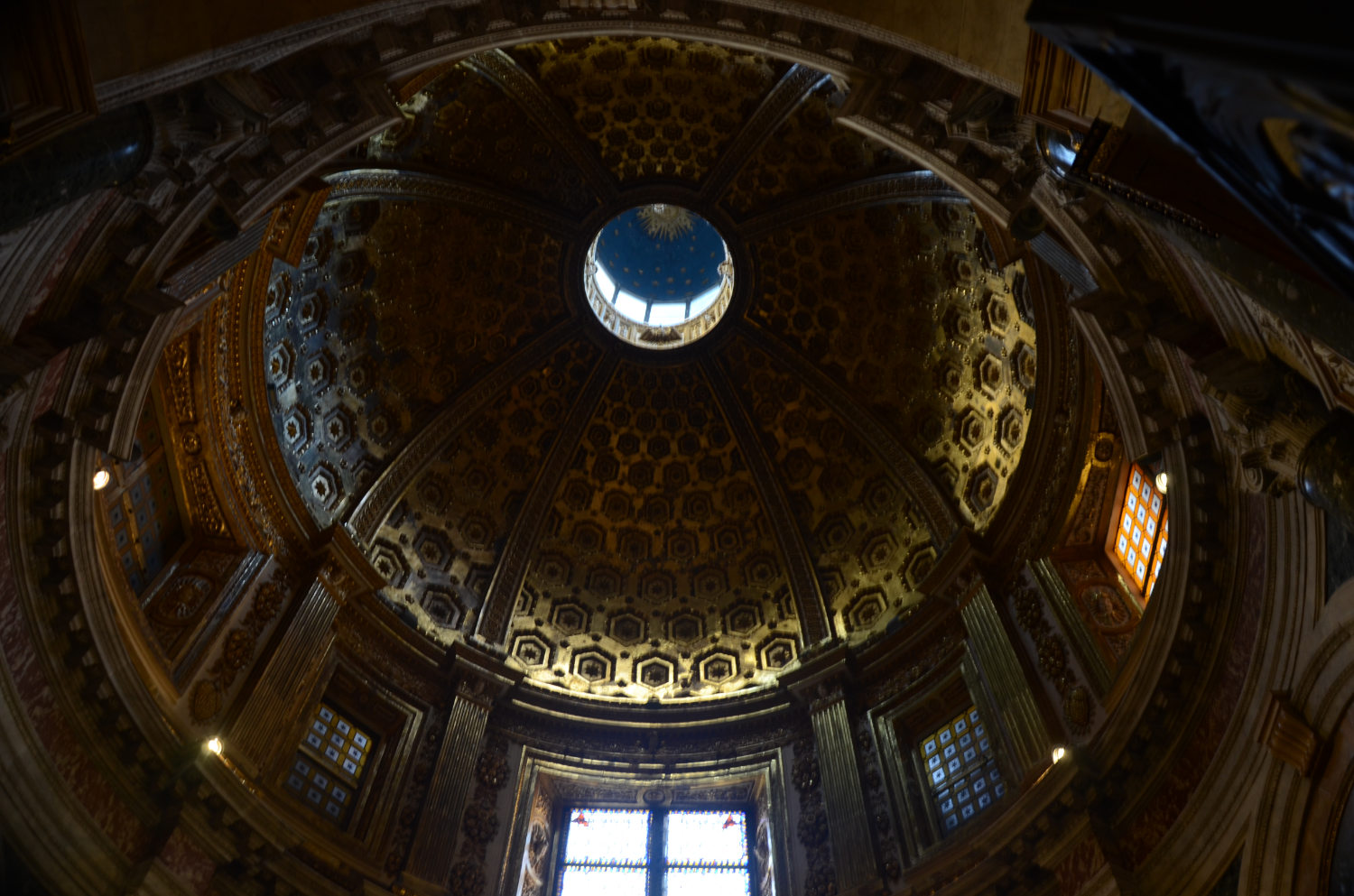

The Cathedral's best kept secret
The famous frescoed Piccolomini library that we mentioned earlier is our absolute favorite masterpiece in Italy thus far, though it is relatively unknown. Even if lines are long, don’t skip out on this section of the cathedral, which can be found halfway down the left wall before the dome. We had no idea what we were in for, but it alone is worth the entire price of admission.
Painted by Pinturicchio, the library is a brilliant sight to behold and optimistically tells the story of Aeneas Piccolomini. Aeneas was one of 18 children born into an impoverished family, but in 1458 became Pope Pius II. Still as vivid and brilliant are the walls and ceilings as the day Pinturicchio painted this magnificent room 550 years ago. Remarkably, it has never been restored.

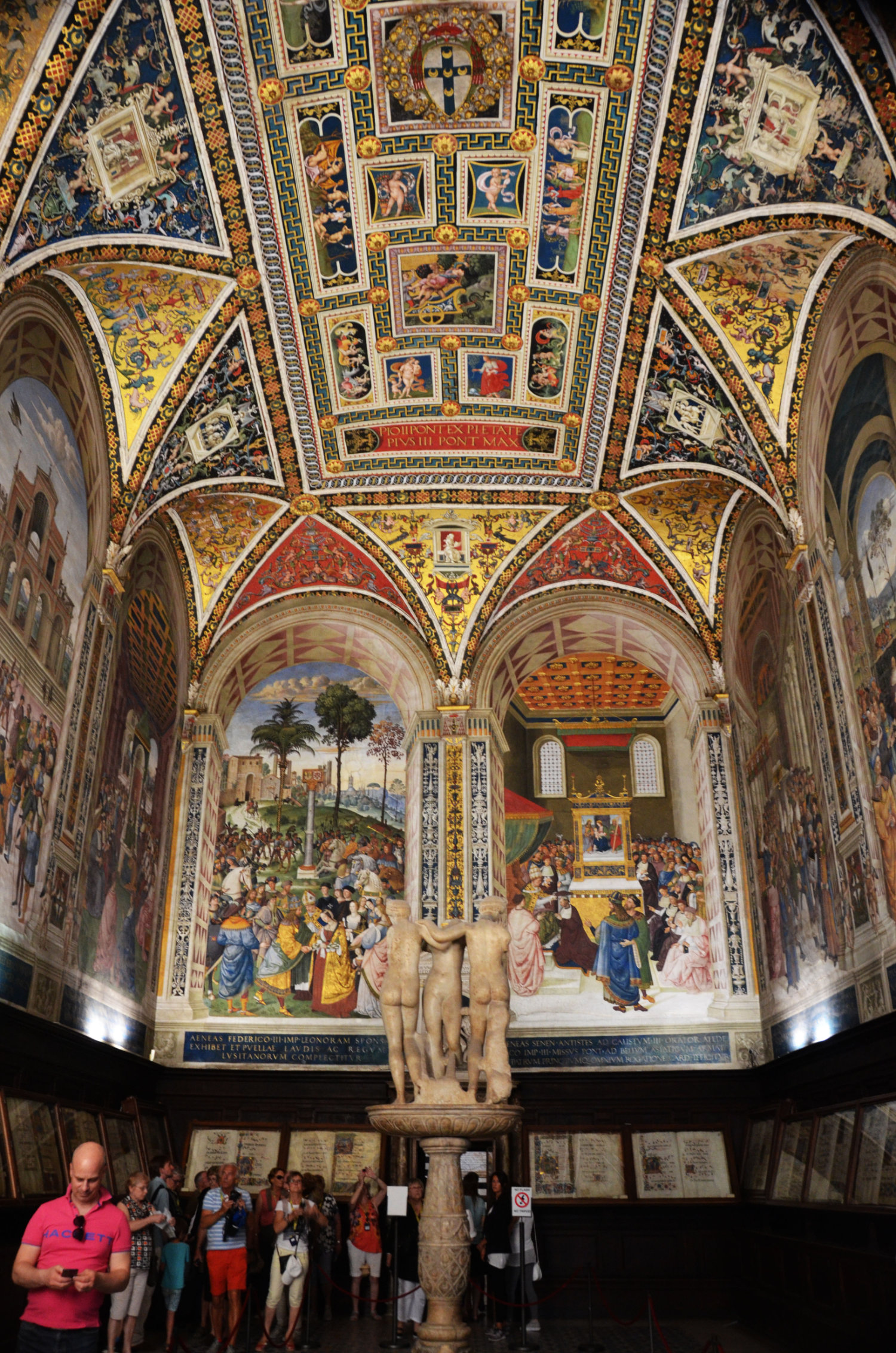
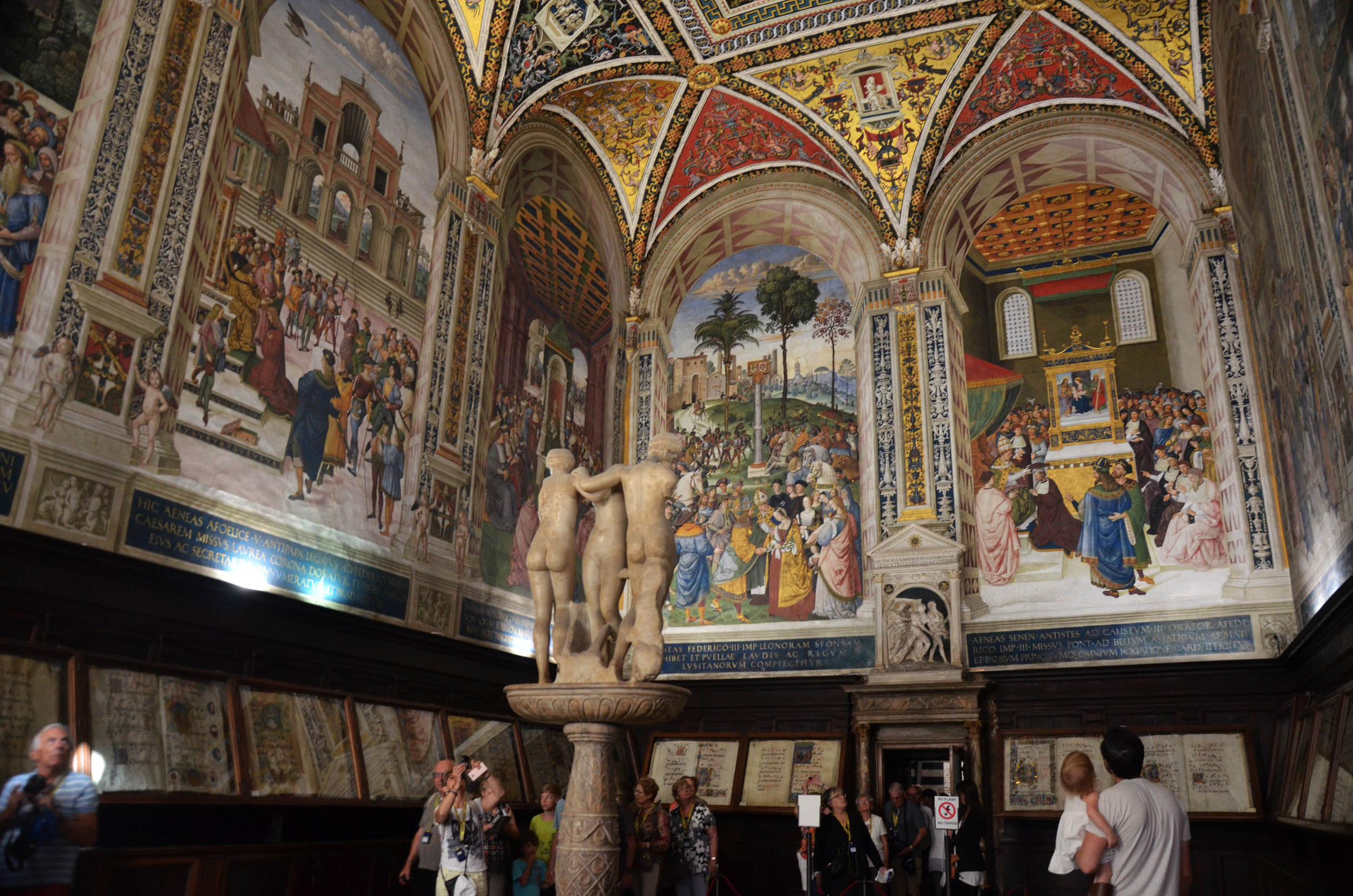
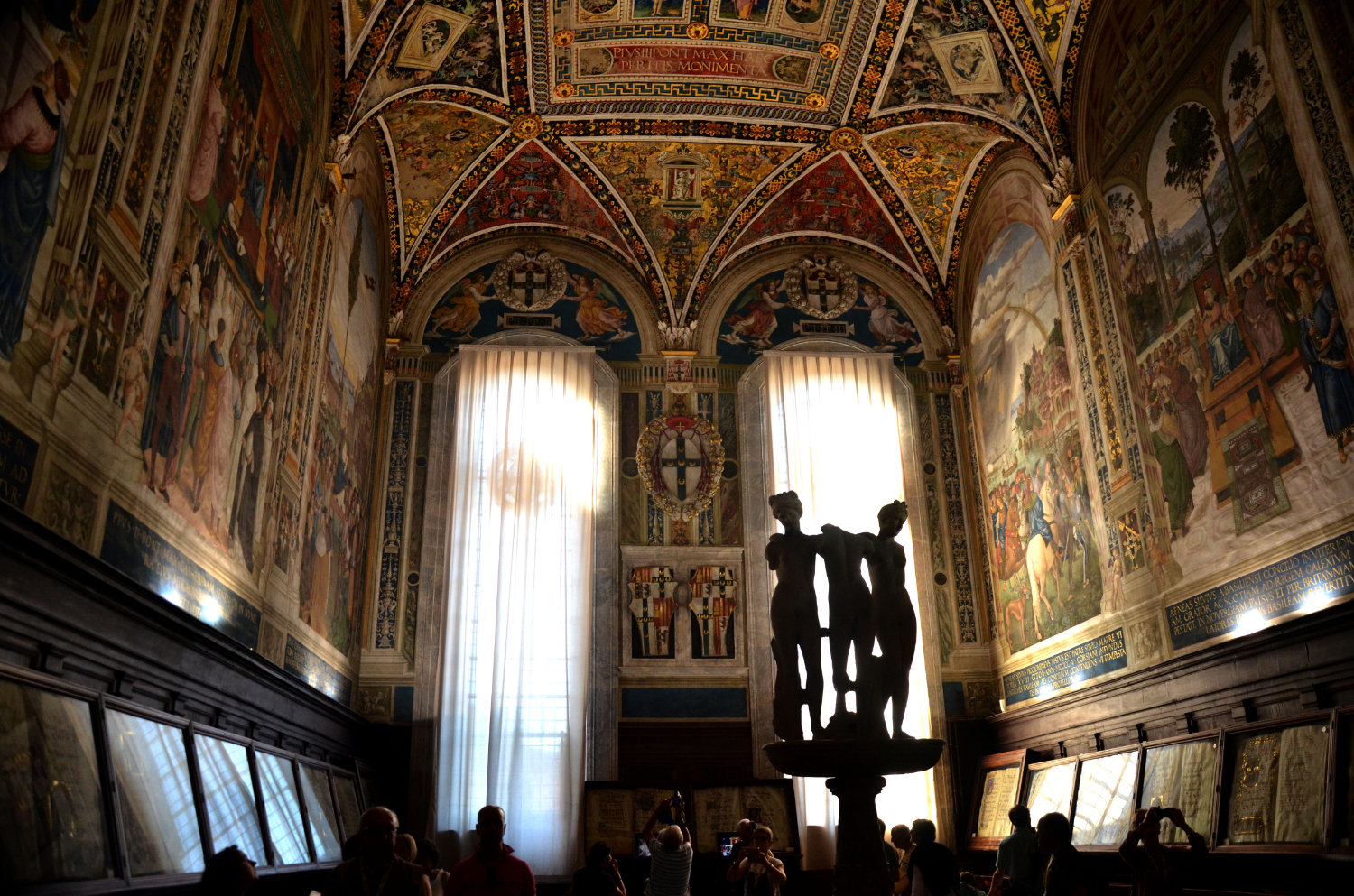
Now take your time walking through the rest of the cathedral. Imagine attending mass as a commoner amongst such riches. Study the walls, the ceilings, the floors, and absorb what details you can. You will be sure to stand in awe of the glorious Duomo di Siena - just as we did.
Once your neck can't take it anymore, you'll exit right next to where you came in towards the front. Head down the marble steps, take a sharp left and find the giant archway. If you follow the steep steps down you will come to the crypt and baptistry. Interestingly, since the cathedral was built on such a hilly surface, the Duomo is entirely too large for its foundation. This is where the crypt and baptistry became a crucial part of the building in terms of its support structure.
What could have been
Unfortunately, our toddler desperately needed a break (totally acceptable) but we didn't get to go inside the baptistry or the crypt. If you're interested, the Baptistry houses a bronze baptismal font designed by Jacopo della and work from Donatello, Ghiberti, and Quercia, all dating back to the early 1400s. The crypt is actually the site of a 12th century Roman church which was later filled in to support the oversized cathedral. Both the crypt and baptistry are included in the price of the combo ticket if you purchased this in advance.

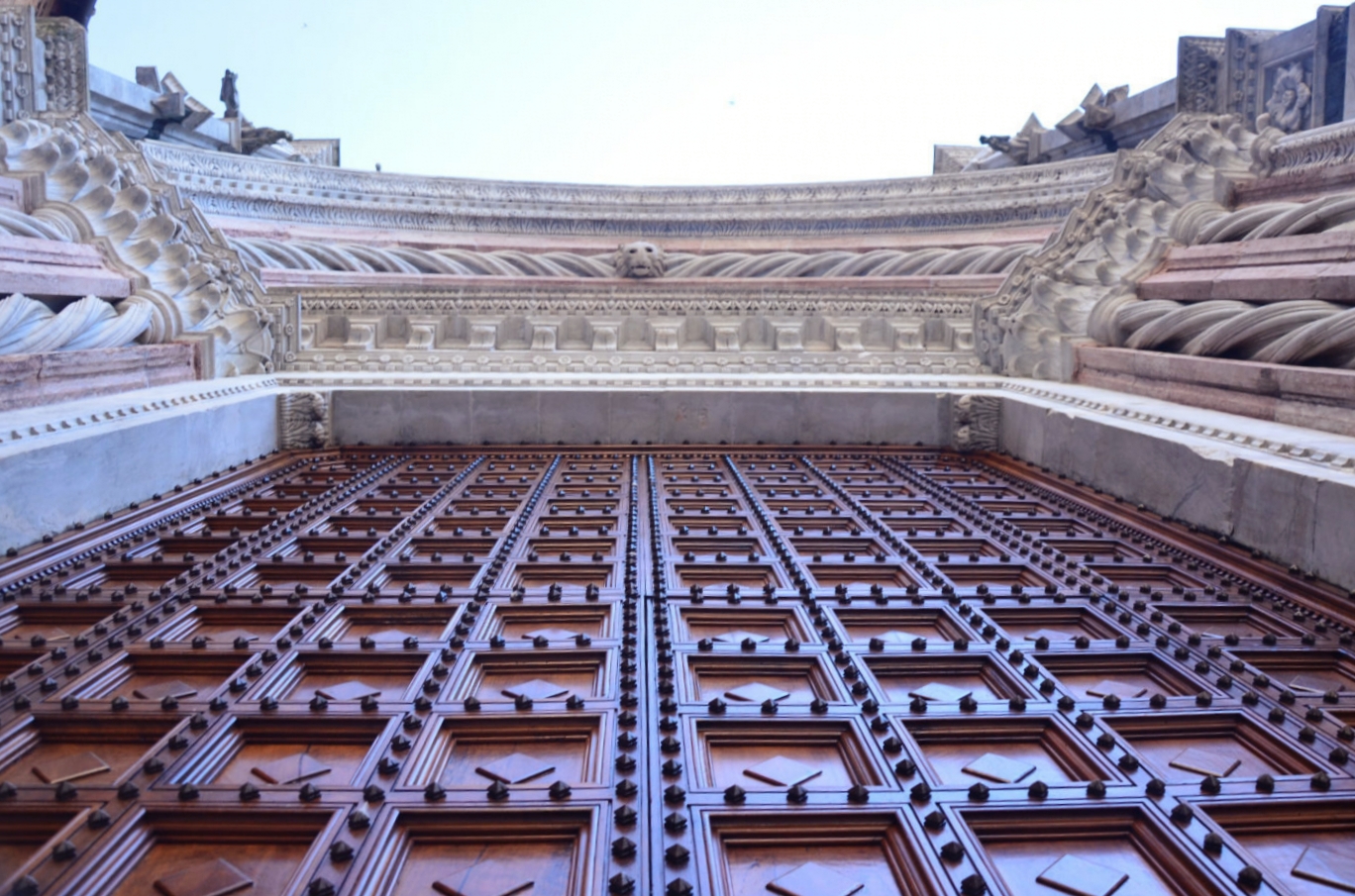
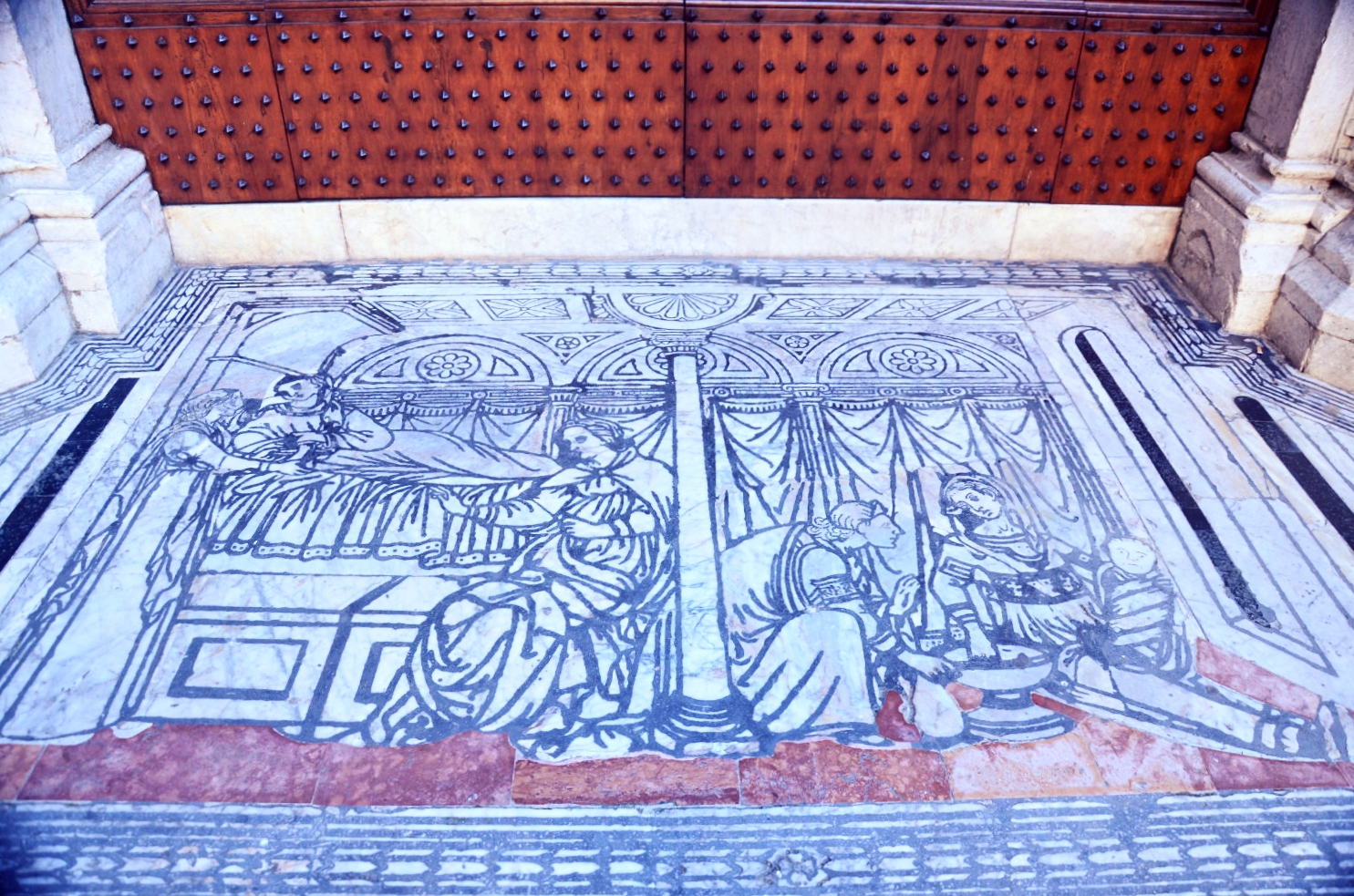
Once you've seen the baptistry and crypt, head back up the stairs toward the duomo but hang a left at the Piazza Jacopo della Querica to view the unfinished church before entering the Duomo Museum.
The Duomo di Siena, as magnificent as it is, stands as a failed attempt to outshine rival Florence’s main duomo. You can see the remnants of the beginning stages of a plan to expand the new cathedral in the early 1330s. The expansion would have made Siena's church the largest in all of Christendom, but they highly underestimated the complexity of erecting such an enormous structure without land to build upon. Once a proud and wealthy people, the Sienese golden age of wealth diminished after the city was decimated by the Black Plague. Sadly, they were forced to abandon their plans to finish the massive church.
Legend says the Sienese people saw this as a sign from God that their people were too proud and the Black Death their punishment. As important as the city was, the unfinished church stands as a marker for the demise of Siena influence. Even when rival Northern Italian cities recovered from the plague, Siena never did, and it quietly faded into the shadows of Florence's economic and cultural power from there on out.
The Duomo Museum and Facciatone
Now that we're sad, let's head over to the the Duomo Museum to pick ourselves back up. Here you will find a few more noteworthy pieces such as Duccio's stained glass window that once hung over the cathedral's altar. You'll also find a variety of sculptures that littered the facade nearby.
Last and most certainly not least, take the 3 flights of stairs up to the top floor. You'll pass two exhibits on the way up, but hold off for a few minutes and follow the signs to the top. You'll then hang a right at the top of the stairs and most likely come upon a group of people quietly waiting for a trip to the second facade. Apparently, during the busy season, there can be quite a line. Make sure you wait it out. This last attraction is certainly worth taking the time out of your day.
The doorman will let somewhere between 20 and 25 people head up the stairs at one time. You will be escorted up 140 steps in a narrow spiral staircase to the Panorama del Facciatone - Siena's very best view of its skyline and the surrounding Tuscan countryside. Be careful, as it's quite a trek.
But the reward is worth it.

To say the least.


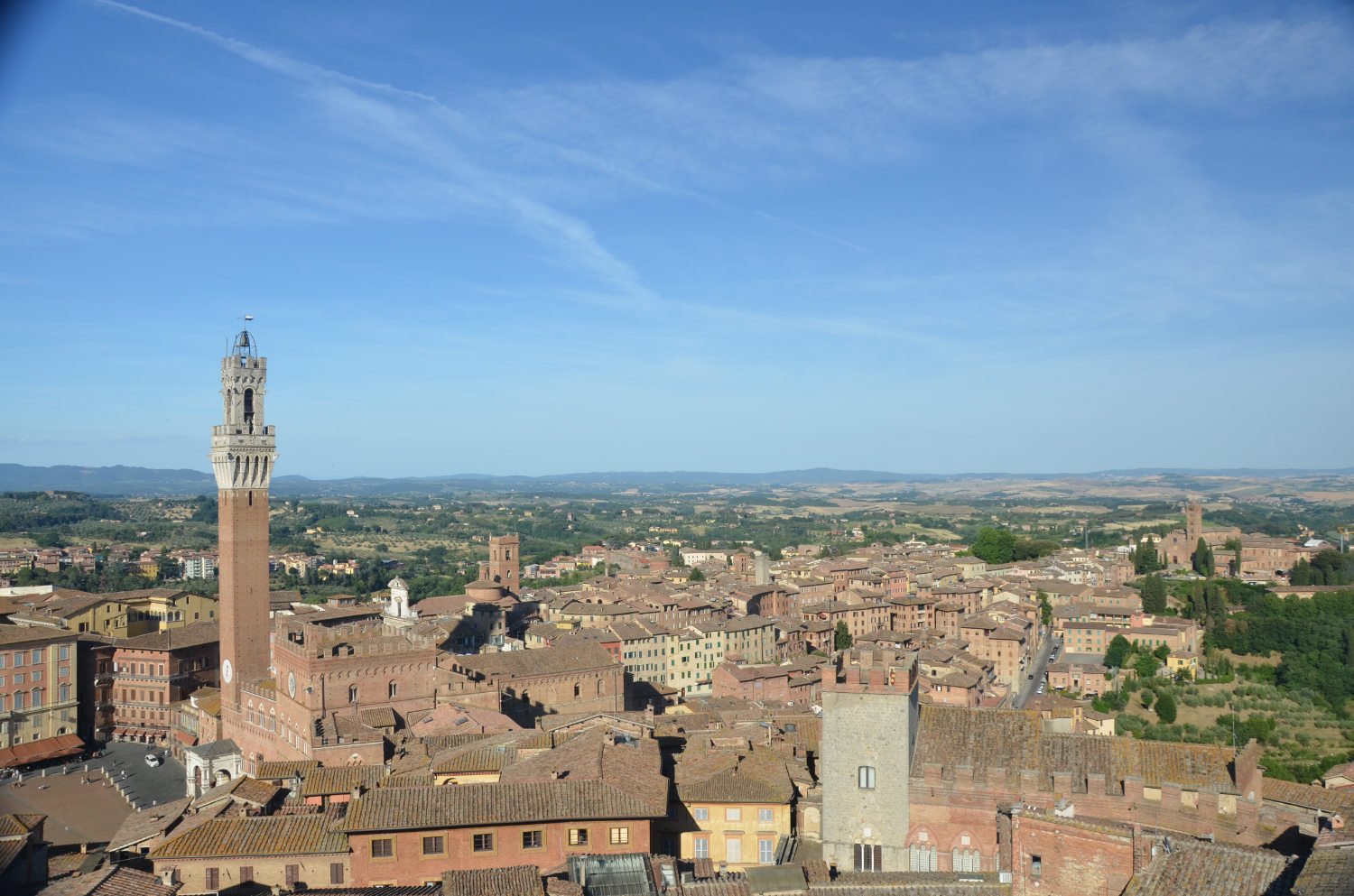
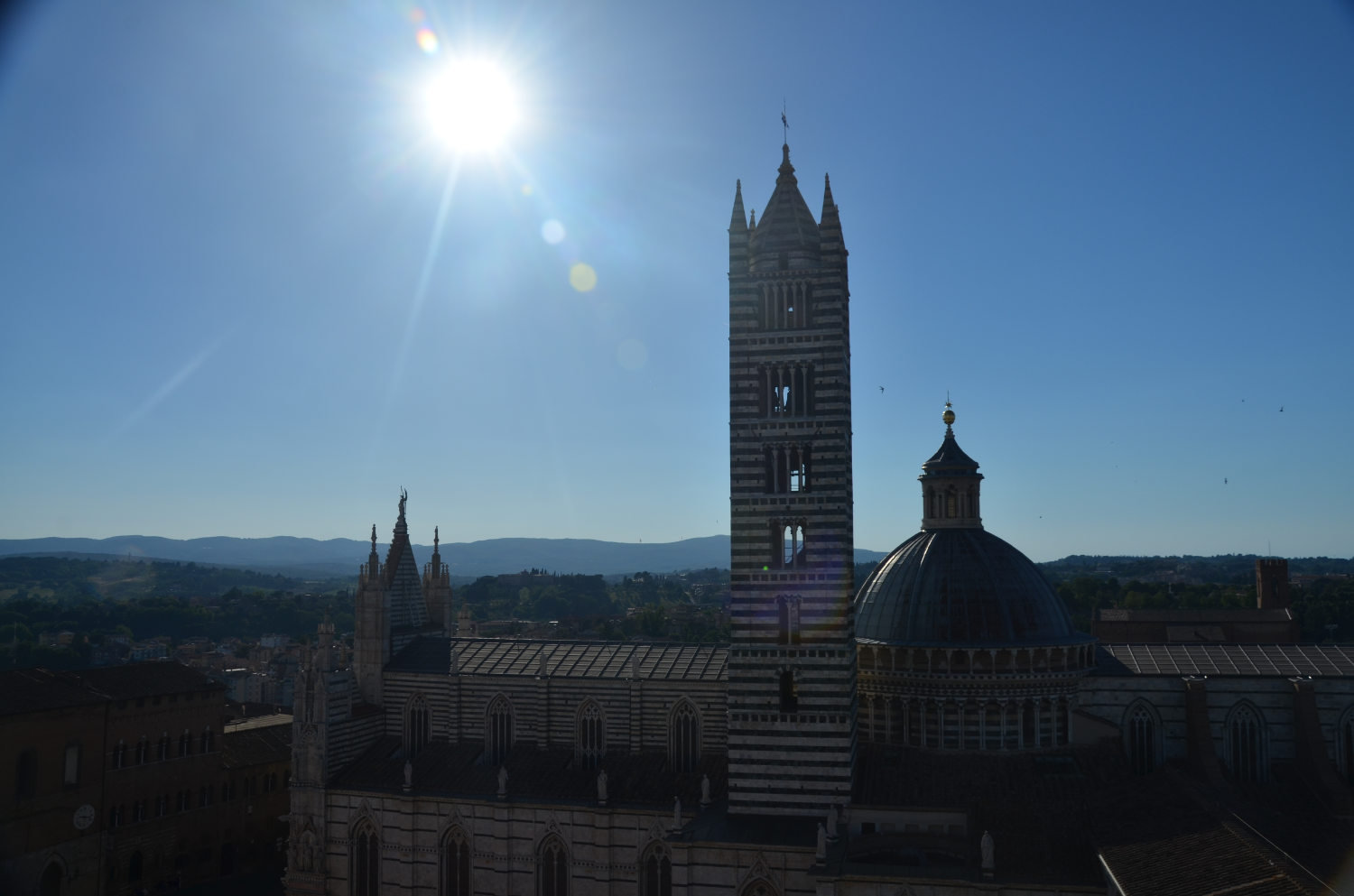
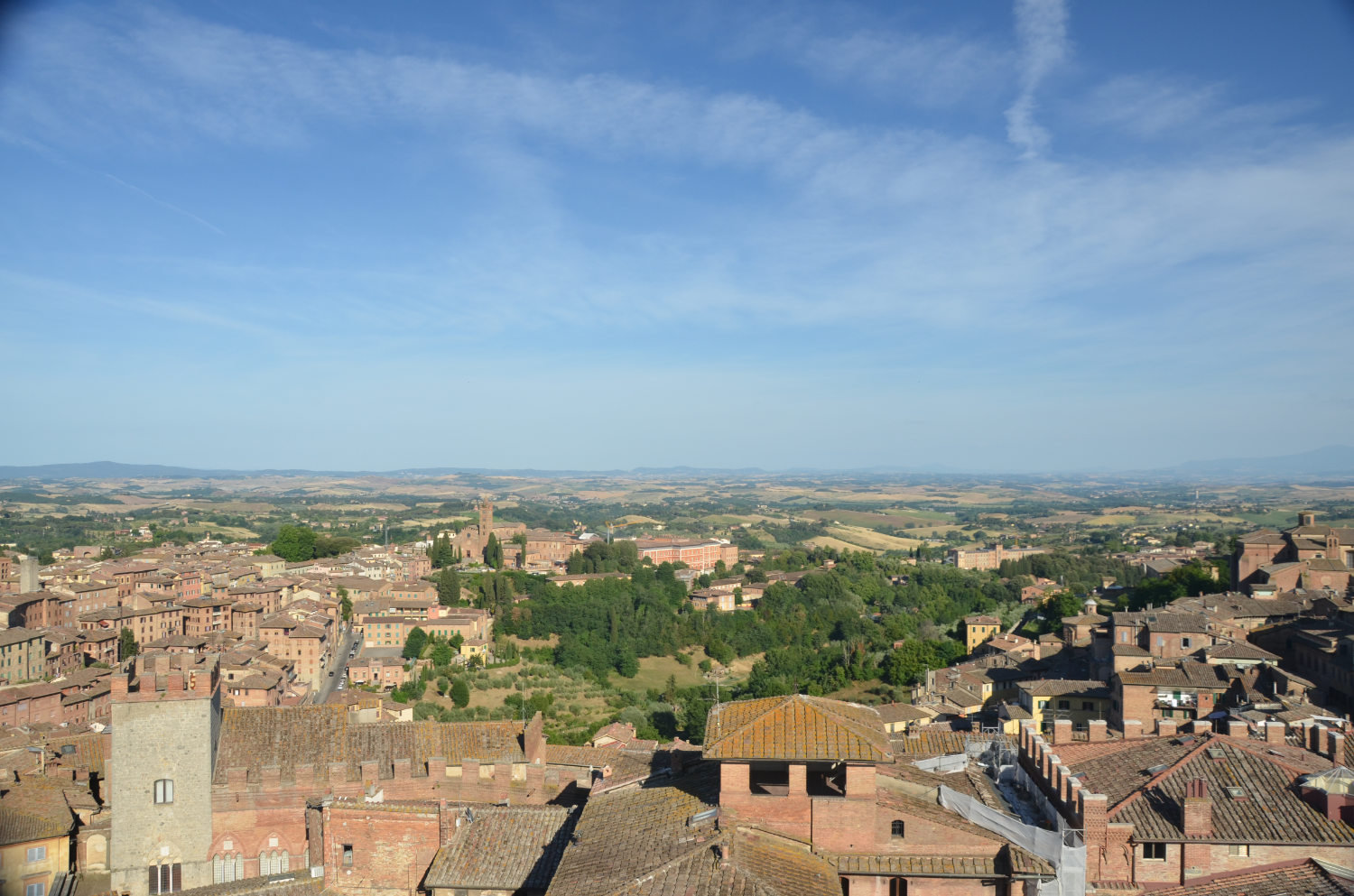

Saying so long to Siena
Though it was a wild and tiring weekend, we could not have enjoyed Siena more. In fact, we both miss it a little bit. This post is just covering one of the handful of spots we visited, too. Keep an eye out for more about this wonderful Italian hill town.
And even though we just left, we've already started making plans to head back, maybe this time without a toddler (love you, sweetie). There are endless restaurants and cafés, hundreds of side streets, and even more art to see. We could easily spend a week or two there before getting our fill.
We'll see you again someday, Siena.




